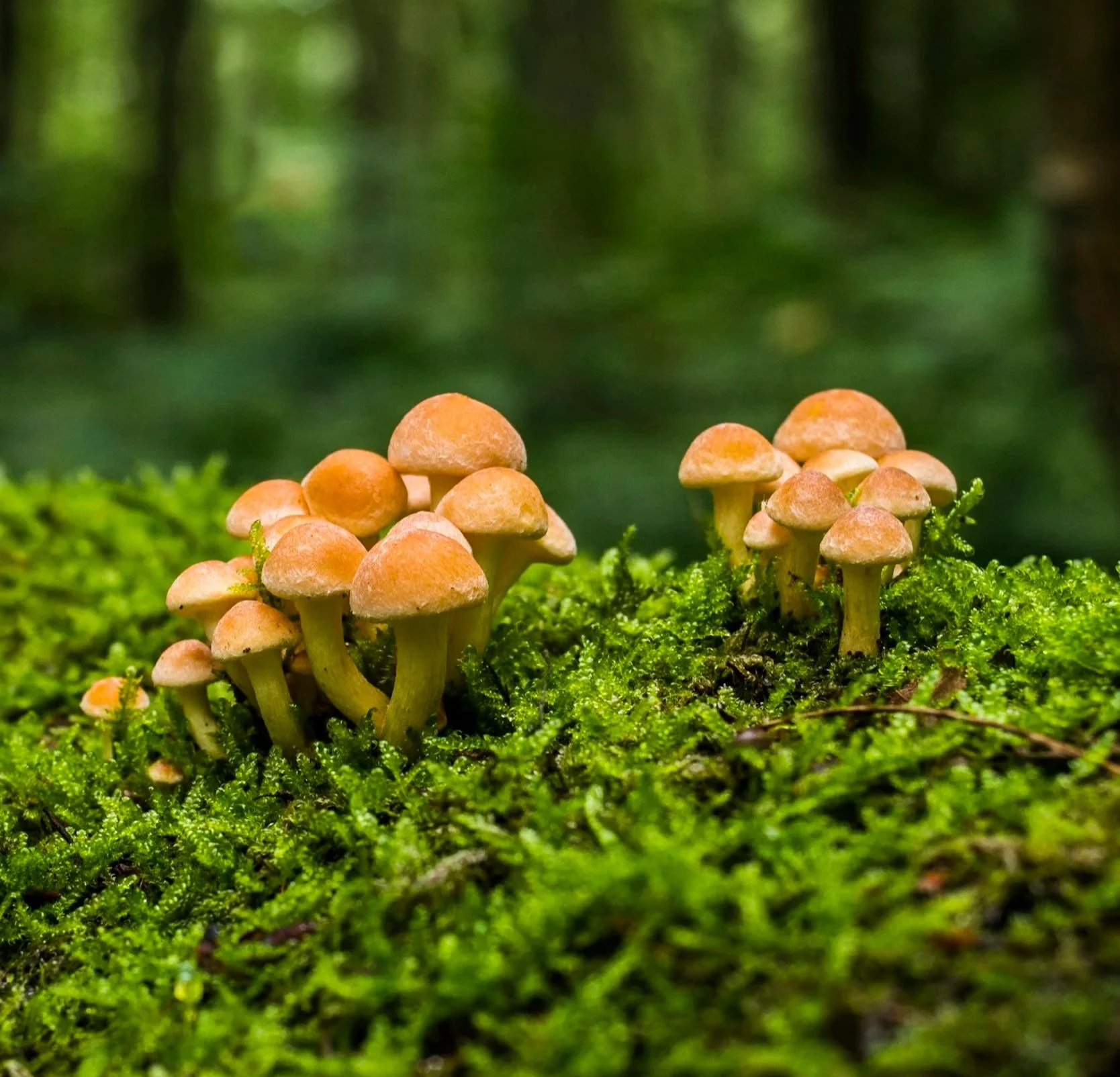Managing CO2 in Mushroom Grow Kits
Plants love CO2, but for mushrooms keeping levels low is important for healthy fruiting conditions.
Summary (TL;DR)
During fruiting, mushrooms release CO2. In still, enclosed setups, CO2 tends to accumulate near the substrate, where pins form.
Passive fresh-air ports help, but cracking the lid may be insufficient to clear the CO2-rich boundary layer at the bottom.
For most monotubs, 1–2 brief openings per day—with gentle wafting—replaces that boundary air and supports pinning/fruiting.
RyzaPods place the substrate at the rim under a humidity dome; opening the dome rapidly vents the dense, lower air—no vigorous fanning required.
Even when no misting is needed, open RyzaPods 2–3× daily to keep CO2 low and fruiting conditions steady.
Additional Context
Fruiting is a conversation between humidity, evaporation, light, oxygen—and CO2 management. In small chambers used for home mushroom growing, weak mixing allows heavier-than-air CO2 to pool low unless you intentionally exchange it. CO2 is denser than air, so it tends to settle in deep grow chambers.
Why CO2 Management Matters
Excess CO2 typically leads to leggier stems, smaller caps, and slower pinning. Brief, regular air exchange reduces CO2, brings in oxygen, and keeps surface evaporation cycling—signals that encourage robust primordia and healthy flushes.
Monotubs: Why “Crack the Lid” May Be Insufficient
CO2 doesn’t flow like water, but in still air it can stratify near the substrate. Ports and lid cracks are passive; depending on hole area, placement, room airflow, and species, they may not fully clear the bottom layer. A short, deliberate opening is a simple way to reset the air where it matters most.
A Simple Monotub Routine (Starting Point)
Open 1–2× daily during fruiting. Lift the lid fully for ~10–20 seconds.
Waft gently with the lid or a clean card to move bottom air out and fresh air in.
Close promptly to preserve humidity. Mist only if the surface sheen fades.
Tune by signals: If stems get tall/skinny or caps stay small, increase exchange frequency (not force). If surfaces dry or caps crack, shorten each opening. Species differ (e.g., oysters are more CO2-sensitive), so adjust accordingly.
How RyzaPods Make CO2 Management Easier
RyzaPods seat the substrate right at the rim under a humidity dome. When you open the dome, the CO2-rich air nearest the substrate is quickly vented—you’ve effectively “reset” the boundary layer without aggressive fanning.
Open 2–3× daily, even if you’re not misting.
Each opening refreshes oxygen and keeps evaporation cycling—ideal fruiting conditions with low effort.
This makes RyzaPods a standout option among home mushroom grow kits for consistent results.
Prevent Common Pitfalls
Over-venting: If the surface loses its fine sheen or caps dry, shorten openings.
Relying solely on ports: Helpful, but not always enough to clear the bottom layer.
Mixing goals: Misting manages moisture; opening manages air. Treat them separately.
Consider Home Environment
Home environments can often reach 1000 PPM (outside air is around 425 PPM) or higher if the area is not well ventilated. This high level of CO2 can impact both mushroom growing and your health, so make sure your home and growing space is well ventilated during fruiting.
Usage & Timeline
Monotubs: Start daily openings when you initiate fruiting (light + FAE). Continue through each flush.
RyzaPods: Open the dome 2–3× daily from the start of fruiting; mist only if needed. The interior of the humidity should be moist at all times, but only mist the substrate if water has evaporated or been absorbed from the last misting session.
What Healthy Fruiting Looks Like
Proportional stems and caps (not overly tall).
Even pinsets that progress steadily.
Microbeads of moisture that come and go—evidence of the evaporation cycle.
FAQ
Why not just crack the lid?
Cracks/ports can help but are passive. In many setups they don’t reliably clear the CO2-rich air at the bottom; a brief full opening refreshes the boundary layer more consistently.
Do RyzaPods need active fanning?
Usually not. Opening 2–3× daily rapidly vents the lower air. The included filter port will provide approximately many complete air exchanges during the day, but opening the lid helps to prevent stratification. Mist only if surface sheen fades or water beads are no longer present on the humidity dome.
How does this fit with home mushroom growing?
It’s a low-tech routine that improves results across small setups and home mushroom grow kits—simple actions with outsized impact.
Closing Thoughts
Fruiting success often comes down to intentional, gentle air exchange. For monotubs, treat 1–2 deliberate exchanges per day as your starting routine; for RyzaPods, 2–3 quick openings keep CO2 in check with minimal fuss. It’s straightforward, reproducible, and ideal for home mushroom growing at any experience level.
Shop RyzaPods↗
Learn More: Ryza’s Mycopedia↗
How RyzaPods Work↗
